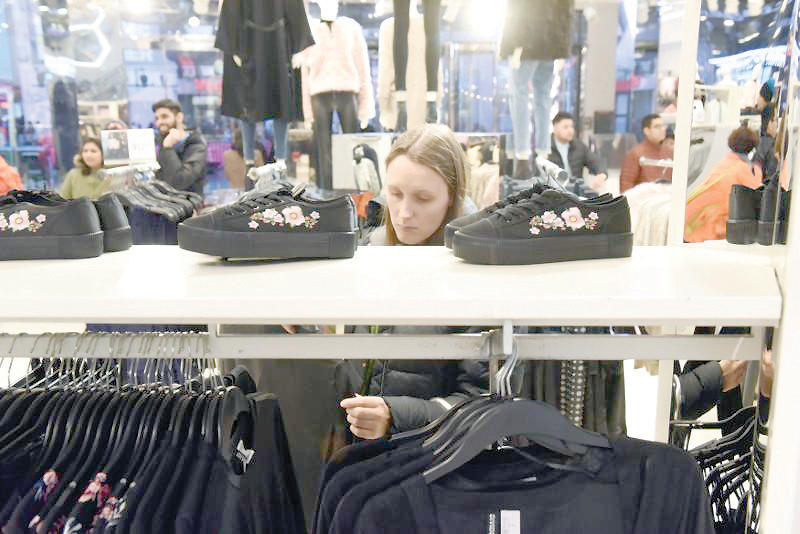

WASHINGTON: US consumer prices increased in January, with a gauge of underlying inflation posting its largest gain in 12 months, bolstering views that price pressures will accelerate this year. Those expectations were underscored by other data on Thursday showing the number of Americans filing for unemployment benefits fell last week to a 48-year low as the labour market tightens. Another survey showed prices paid by manufacturers for raw materials hit a more than six-year high in February.
The combination of rising inflation and a robust labour market could force the Federal Reserve to raise interest rates a bit more aggressively this year than currently anticipated as it worries about the economy overheating. The US central bank has forecast three rate hikes in 2018. The first rate increase is expected later this month.
The Commerce Department said consumer prices as measured by the personal consumption expenditures (PCE) price index rose 0.4 per cent. That was the biggest increase since September and followed a 0.1 per cent gain in December. The annual increase was, however, unchanged at 1.7 per cent in January because of unfavourable base effects.
Excluding the volatile food and energy components, the PCE price index advanced 0.3 per cent in January — the largest gain since January 2017. The so-called core PCE price index rose 0.2 per cent in December. Base effects also kept the annual increase in the core PCE price index unchanged at 1.5 per cent in January.
The inflation readings were in line with economists’ expectations. The core PCE index is the Fed’s preferred inflation measure and has undershot the central bank’s 2 per cent target since mid-2012.
Inflation is expected to rise towards its target this year also as a $1.5 trillion tax cut package and increased government spending spur faster economic growth. Rising commodity prices as well as a weakening US dollar are also seen stoking inflation.
The dollar initially firmed against a basket of currencies before surrendering gains to trade little changed. Prices for US government bonds rose marginally while stocks on Wall Street fell.
In another report, the Institute for Supply Management (ISM) said its index of prices paid by factories increased to a reading of 74.2 in February, the highest level since May 2011, from 72.7 in January.
The ISM’s overall index of national factory activity jumped to a reading of 60.8 last month from 59.1 in January amid strong order growth and hiring. A reading above 50 in the ISM index indicates growth in manufacturing, which accounts for about 12 per cent of the US economy.
January’s increase in inflation cut into consumer spending growth. Consumer spending, which accounts for more than two-thirds of US economic activity, gained 0.2 per cent. That was the smallest increase since August and followed a 0.4 per cent advance in December.
When adjusted for inflation, consumer spending fell 0.1 per cent, declining for the first time in a year. The so-called real consumer spending rose 0.2 per cent in December.
The drop in real consumer spending in January suggests consumption will slow this quarter from the fourth-quarter’s robust 3.8 per cent annualised growth pace.
Growth estimates for the first quarter are as low as a 1.7 per cent rate. But spending remains underpinned by a strong labour market. In a third report on Thursday, the Labor Department said initial claims for state unemployment benefits dropped 10,000 to a seasonally adjusted 210,000 for the week ended February 24, the lowest level since December 1969.
Oman Observer is now on the WhatsApp channel. Click here



